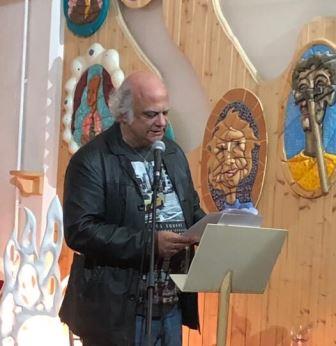Three chords and the desire for Truth. Rock ‘n’ roll as search for the infinite.
Is it possible that a song played on the radio is able to convey, in time and space, the desire of the human being for “something beyond”? Can the artist, whether a writer or a singer / musician, transmit his or her own desire to the heart of another person, the listener? How is it possible? How common is it? Is it something exceptional or can it happen every day? How is it possible that through the most fashionable market apparatus, through countless wires and cables, under the surface qualities of ambiguity and fiction, the artist’s desire for something which is usually undeclared can be kept and communicated?
The last period of pop culture has helped to “forget” that the roots of most of our contemporary musical forms emerge from the blues and the gospel music, which extend the true note from the muddy river mouths of human settlements to the sparkling firmament upon them. Outwardly reduced to “show” and “entertainment,” the sacredness of the song is then forced inward into a closed circuit, where communicating and receiving can be confused with something else, and it can be denied in its true nature. The exhibition will try to demonstrate that this reduction is not successful, that the basic communication “heart to heart” between artist and listener continues to occur.
The exhibition wants to show and celebrate the presence of the human desire as a major driving force of music, which continues to fascinate the young people, using examples of songs and artists that crossed the global history of music and who were among the greatest modern interpreters. The modern rock ‘n’ roll is a hybrid which is a very appropriate metaphor of the interaction in modern society between the sacred and the profane. The exhibition will try to highlight how, despite the cultural hostility, the modern popular music has become in some cases the most unlikely vehicle for the religious dimension of man in modern culture.
In music there is something which goes beyond the apparent content; something disproportionate, that could be called, according to St. Thomas’ definition of sadness, the “desire for an absent good.”
Curated by John Waters.
In collaboration with Walter Muto, Emma Florio.
With the contribution of Marta Albertin, Phil Faconti, Jonathan Fields, Walter Gatti, Kenneth Genuard, Maurizio Maniscalco, Giacomo Masato, Paolo Vites.












